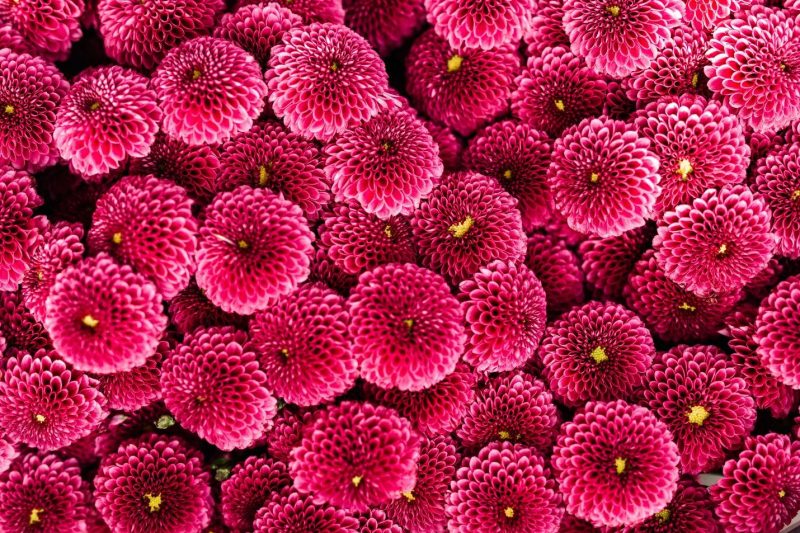Dahlia is a genus of tuberous tender perennial plants that are the member of the Asteraceae family. Dahlia consists of 42 species with over 20,000 cultivators. It is named after Anders Dahl who was a Swedish botanist in the 18th century. It is also the official flowers of San Francisco and Seattle. Use this article as a beginner’s guide on Dahlia.

Meaning
Positive: Elegance, Dignity, Inner Strength, and Creativity.
Negative: Betrayal, Dishonesty, and Instability.
Gifting: Commitment and bond that lasts forever.
Season
Dahlia bloom from mid-summer to autumn and the tubers are planted in late spring. Their growing season lasts for at least 120 days.
Facts
- Dahlias were discovered by the Spanish due to the flower’s unavoidable beauty in the 16th century when they grew wild in some parts of Mexico, thus they officially became the national flower of Mexico in 1963.
- Dahlias are relatives of the famous chrysanthemums, sunflowers, daisies, and as you might have already guessed, zinnias, due to their identical petals.
- Dahlias come in a wide range of colors, sizes, and even shapes. They come in almost every color be it pink, purple, lavender, red, orange, yellow, white, or bicolor. Their sizes can vary from 2-inch mini bite-sized babies to huge 15-inch jumbo blooms. Mostly they grow 4 to 5 feet tall.
- Dahlias can even change colors. While we expect annuals and perennials to produce the same color of flowers every time, but this does not always work with dahlias, you will experience one plant producing several colors at the same time.
- Dahlias tubers, while underground, multiply every year, just like potatoes. You just need a tuber with an eye (bud) to grow a sturdy plant.
- Dahlias are not only toxic for cats and dogs but also for humans as their leaves and tubers contain phototoxic polyacetylene compounds that irritate the skin when handled in sunlight.
Uses
- Dahlia petals are used in salads.
- Dahlias and tuber, both are edible. Tubers taste something in between potatoes and radish.
- It is also used as a garnish.
- The tubers are consumed as a vegetable in Mexico.
- The sweet extract from the tubers is either used as a beverage or mixed with hot or cold, water and milk to make sweet drinks. Besides this, it is also sprinkled over ice-cream.
- It is used as an ingredient in some Mexican dishes.
- Aztecs used dahlia to treat infected wounds like grazes, rashes, and cracks
- A handwritten herbal treatment in the Latin language was rediscovered in 1929 which proved that Aztecs used dahlias to treat epilepsy since the 1550s.
- Mashed-up petals are used to treat itchiness, inflammation, and insect bites or stings.
- The skin of tubers is rich in antibiotic compounds.
Growth
- Dahlias grow from small tubers that are planted in late spring.
- Make sure that the spring frost is no longer a treat before planting tubers as dahlia cannot survive in cold soil. The ground temperature should at least be 60°F.
- Dahlia requires rich, loamy, sandy, and well-drained soil of pH around 6.5 to 7 and slightly acidic.
- One month before the planting, mix commercial liquid fertilizer which contains low nitrogen such as 5-10-10 or 10-20-20 into the soil. Fertilize again after sprouting every 3 to 4 weeks from mid-summer to early autumn.
- While planting dahlias make sure to pick a spot with full sun as they require 6 to 8 hours of direct sunlight for best bloom. However, provide them a little shelter from the wind.
- Wait for the sprouts to pop out of the soil before watering. Deepwater them, for about 30 minutes or more if the climate is dry or hot, 2 to 3 times a week throughout the growing season.
- Dahlias love the moist or average climate. They can only handle the winter of zone 8 to 11. If you are in zone 2 to 7 and want to grow dahlias every year, you can either treat them as annuals or dig them up to store for winters. They are only perennials in cold regions like North America, that too aft